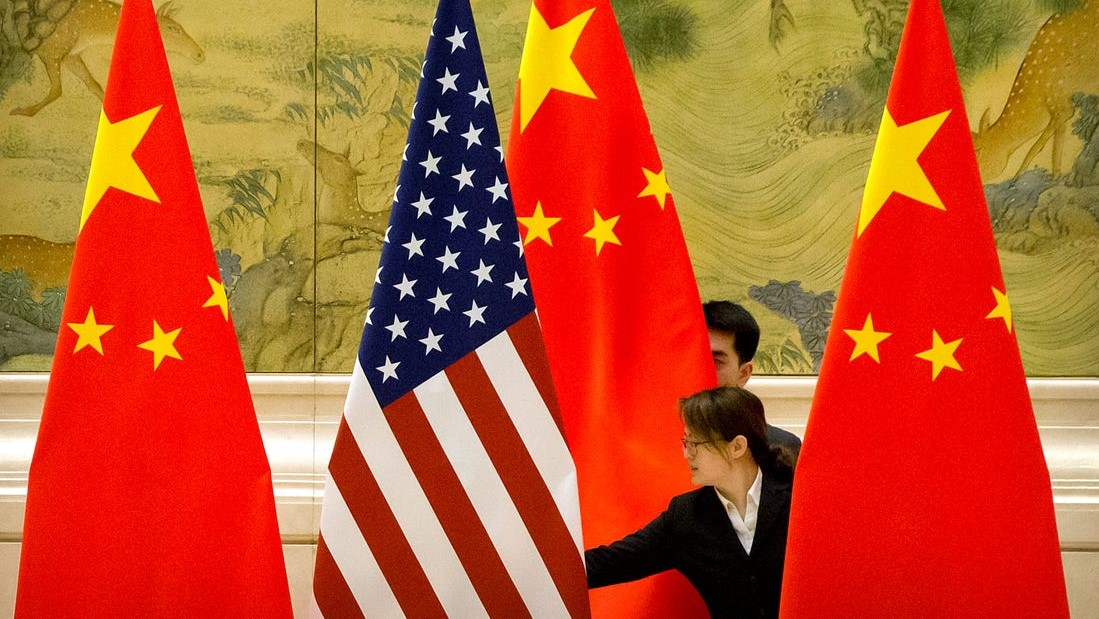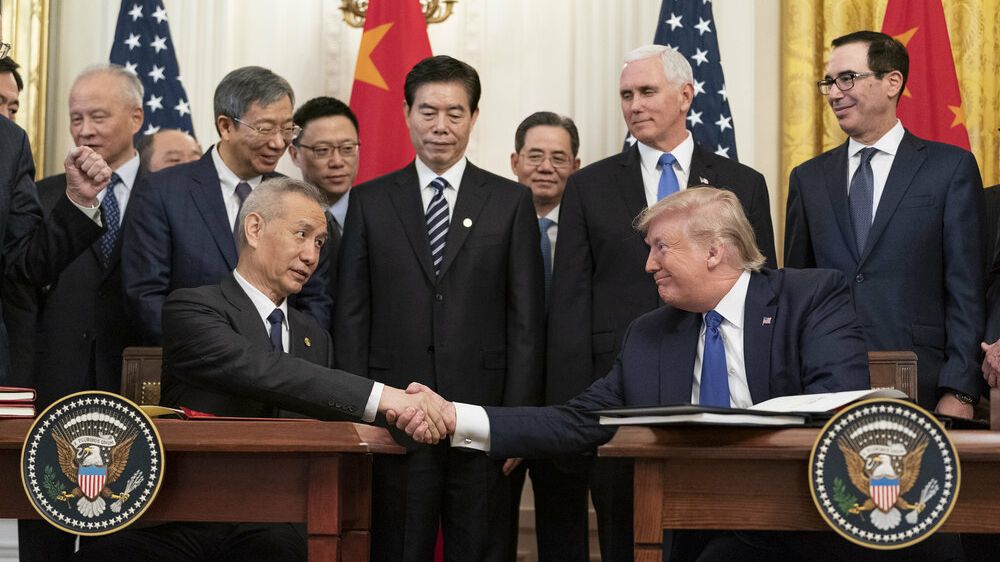Published 27 May 2020 | 6 minute read
In a US election year with the global economy battered by COVID-19, deteriorating relations between the two biggest economies have little hope of being mended. Given the political realities, constructive dialogue won’t be possible until after the election and decoupling from China is now underway.
This article was originally published in the South China Morning Post.
As 2020 commenced, White House political calculations on trade, China, and President Trump’s re-election campaign appeared firmly on track. The three-step political strategy was clear: 1) Initially present China as a country which has broken trade rules for decades, taking advantage of the naivety of previous US administrations to achieve its unprecedented economic rise; 2) after pursuing a “get tough” policy including substantial punitive tariffs, conclude an initial phase one trade agreement which pledges China to significant purchases of US products; and 3) as US exports to China surge in the run-up to the election, position the US-China trade relationship as yet another “problem” that had been “solved” by President Trump, and reap the political pay-off.
Setting aside any discussion of the actual, substantive trade and economic realities underlying this approach (suffice to say, there are both accuracies and inaccuracies), the strategy was entirely plausible from a purely political point of view.
The coronavirus pandemic has now completely upset the political apple cart, complicating the path forward, and forcing an abrupt change in course, both in terms of policy and politics.
Pandemic stalls trade commitments and sours relations
Despite recent increases in agricultural purchases, the global economic slowdown spawned by the pandemic will make it virtually impossible for China to fulfill its phase one purchase commitments. The agreement calls for China to increase purchases of US products this year by $76.7 billion more than its 2017 purchases -- a highly ambitious target under the best of circumstances. This would require a 41% increase in US exports to China, but in the first quarter of this year, US exports to China actually dropped by 10% compared to 2019. And the 2020 picture is worse than it appears because trade in first quarter of 2019 was already depressed compared to the 2017 baseline figures on which the purchase commitments were predicated.
Beyond the trade relationship however, the pandemic itself has become a landmine, threatening to blow-up the broader bilateral relationship. As the death toll and economic costs of the pandemic continue to mount, unusually harsh recriminations have been on the rise.
President Trump has tweeted that “100 trade deals” would not make up for what he referred to as the “Plague from China” and told reporters that he might “cut off the whole relationship” with Beijing. Several senior administration officials have gone to great lengths to highlight the Chinese origins of the virus, and slam China for its lack of transparency and inability – or unwillingness – to prevent its spread abroad.
The Administration’s critical views of China are evidently shared by the US electorate. According to a recent survey of Americans conducted by the Pew Research Center, roughly two-thirds hold an unfavorable view of China for its handling of the virus. Sixty two percent view China’s power and influence as a major threat.
China is now front and center in the 2020 presidential campaign. White House trade adviser Peter Navarro has even gone so far as to say that the election will be “a referendum in many ways on China.”
The new political chessboard
In the wake of all this, what does the political chessboard now look like? Since China is unlikely to live up to its obligations, the phase one trade agreement can no longer be presented as a “success story”. Worse yet, a “failed” agreement with China would make the President look guilty of the same gullibility of which he has accused previous administrations and would constitute an unacceptable political liability.
This will have policy implications. President Trump has openly mused about slapping punitive tariffs on China, or even terminating the agreement outright, if China cannot meet its purchase commitments. Moreover, given the toxic atmospherics between the countries and the negative US public perceptions about China, any agreement – even one being successfully implemented – would be viewed with a jaundiced eye.
The political dynamics have shifted so dramatically that torpedoing the deal – either through the imposition of tariffs or termination – and going back on “offense” against China as a strategic rival is increasingly appealing from a political perspective.
The pandemic has also robbed the President of his strongest re-election asset: a vibrant US economy. With the US tipping into what could be the deepest recession since the Great Depression thanks to the virus, the political need for an external enemy to blame becomes that much greater.
China fits the bill very neatly. Trade war-related economic distress in the politically crucial Midwest has been compounded by high unemployment brought on by COVID-19, or the “China virus” as the President has frequently referred to it. At the same time, there is virtually no significant political constituency in the US today (and certainly not in the handful of swing states that will decide the election) advocating for positive, proactive engagement with China.
Of course, President Trump’s presumptive challenger for the White House, former Vice President Joseph Biden, has seen a political opening, attacking Trump for his “tough talk, weak action” on China. President Trump, a notorious political counterpuncher, has taken to referring to the former Vice President as “Beijing Biden” in political ads, and slamming his opponent for his opposition to the Administration’s early decision to suspend flights from China. The net result is that both candidates are trying to outflank the other in showing “toughness” with China.
Tensions complicate need for managed decoupling
Political calculations, public health fears, economic recession, broken trust, and rising nationalistic antagonisms are a combustible mix that rarely produce enlightened policy decisions. Yet this is the precise caldron we find ourselves in today.
The timing could hardly be worse. It has become increasingly clear that the level of deep economic integration that has taken place between the US and China over the past two decades is no longer sustainable. The optimism and sky-high ambitions which accompanied China’s accession into the World Trade Organization (and hence, the global trade system) in 2001 now seem, with the benefit of hindsight, to have been unrealistic. Profound differences between the US’ market driven economy and China’s centrally managed, state-capitalism model have produced intractable frictions which are especially acute in strategic sectors and continue to defy resolution. While a complete, across the board economic decoupling between the two countries is neither desirable nor possible, a partial decoupling is inevitable and already underway.
The challenge is to successfully engineer a managed partial decoupling between the two economies, which limits disruption and allows for a level of integration that is economically and strategically sustainable for both countries. This is serious-minded work, with success far from assured.
Given the political and other realities we face, don’t expect to see constructive dialogue and substantive progress until after the newly elected administration is inaugurated in January 2021. In the meantime, the risk of a sharp deterioration in the bilateral relationship is probably higher than at any other time since the reestablishment of diplomatic relations in 1979.
For the remainder of the year, the best we can hope for is a holding pattern that limits unnecessary collateral damage to both countries and indeed the world. Cooler heads in Washington and Beijing need to work below the political radar to temper extreme policy options and keep the focus on successfully managing a challenging but necessary partial economic decoupling between the two countries.
© The Hinrich Foundation. See our website Terms and conditions for our copyright and reprint policy. All statements of fact and the views, conclusions and recommendations expressed in this publication are the sole responsibility of the author(s).









